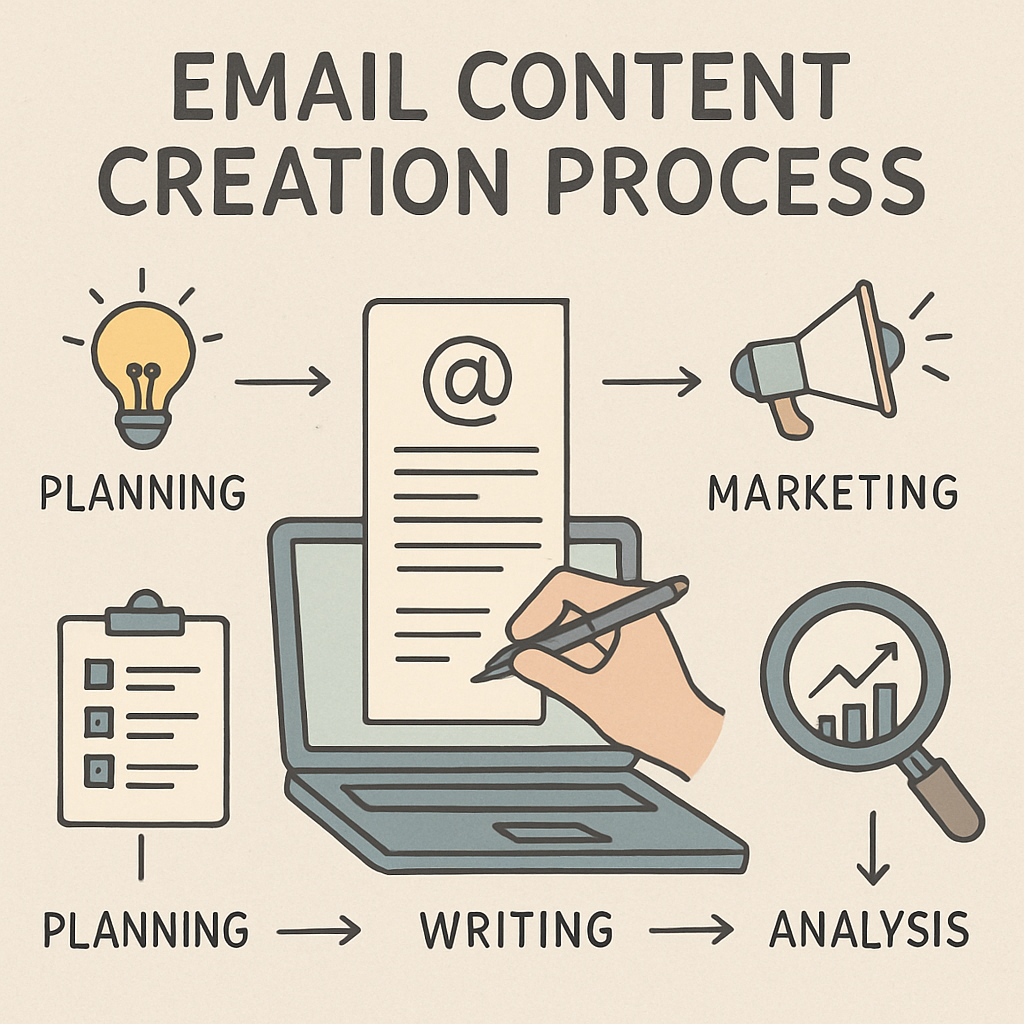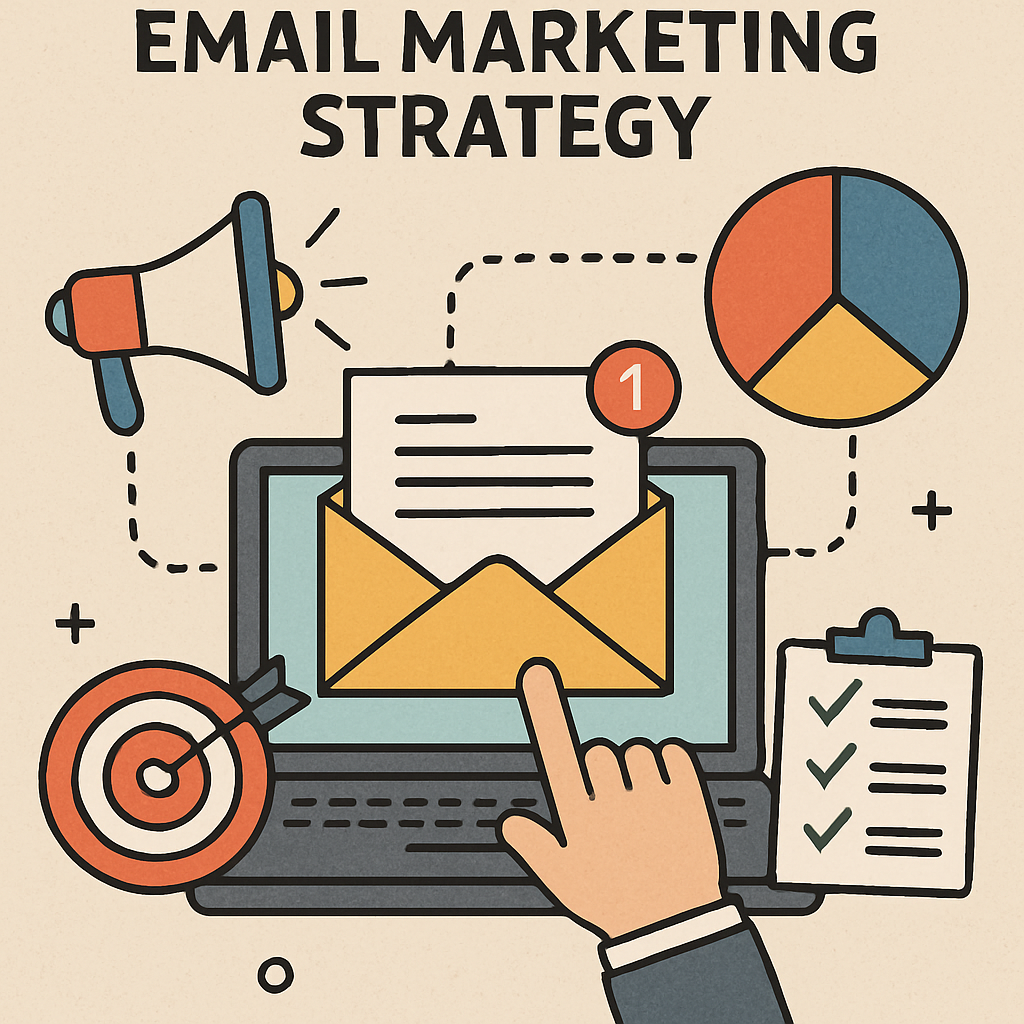Email Marketing: Strategies for Success
Discover effective email marketing strategies to enhance engagement and drive success. Learn about personalization, automation, and content creation techniques.
Effective Strategies for Email Marketing Success
In this article, we'll explore key strategies for achieving
The Relationship-Building Aspect
The core of
Direct Access to Your Audience
One of the greatest advantages of
Customizability and Segmentation
Crafting the Perfect Email
The success of your
Subject Lines: Your First Impression
The subject line is the first thing your audience sees, and it can make or break your email campaign. A compelling subject line should be concise, engaging, and relevant to the content of your email. It should spark curiosity or offer a clear benefit to the reader.
Importance of a Strong Subject Line
Crafting a strong subject line is crucial because it's your first chance to grab the reader's attention. An effective subject line can significantly increase your open rates by enticing readers to learn more. It should encapsulate the essence of the email and motivate the recipient to click through.
Techniques for Crafting Engaging Subject Lines
There are several techniques for creating engaging subject lines. Use action-oriented language, ask provocative questions, or create a sense of urgency. Personalization can also be effective; including the recipient's name or referencing their specific interests can make your email stand out in a crowded inbox.
Testing and Optimization
Subject lines are not a one-size-fits-all element. Conduct A/B testing to determine which types of subject lines resonate best with your audience. By experimenting with different lengths, tones, and styles, you can continually refine your approach to maximize engagement.
Personalization: Making It Personal
Personalization is a powerful tool in
The Impact of Personalization
Personalization goes beyond just using a subscriber's name. It involves curating content that is uniquely relevant to each individual. This approach can lead to higher open rates, improved click-through rates, and increased conversion rates because the content feels tailor-made for the recipient.
Techniques for Effective Personalization
To personalize effectively, leverage data such as purchase history, browsing behavior, and engagement metrics. Create dynamic content blocks within your emails that change based on the recipient's past interactions. This could include product recommendations, tailored offers, or content that aligns with their interests.
Overcoming Challenges in Personalization
While personalization can be highly effective, it does come with challenges. Gathering and analyzing data to create personalized content can be time-consuming and requires the right tools. Additionally, it's important to avoid over-personalization, which can make customers feel uncomfortable or intruded upon.
Content: Providing Value
Content is king, even in
 Creating Valuable Content
Creating Valuable Content
The heart of any successful
Balancing Information and Engagement
Your email content should strike a balance between being informative and engaging. Avoid overwhelming your readers with too much information at once. Instead, focus on delivering concise, well-structured content that keeps them interested. Use visuals, bullet points, and clear headings to enhance readability.
Incorporating Storytelling
Storytelling is a powerful way to connect with your audience on an emotional level. Use narratives to share your brand's journey, highlight customer success stories, or demonstrate how your products or services can solve problems. Engaging stories can humanize your brand and foster a deeper connection with your audience.
The Role of Automation in Email Marketing
Benefits of Email Automation
Automation allows you to send the right message to the right person at the right time. You can set up automated workflows that trigger emails based on specific actions or events, such as welcoming new subscribers, following up on abandoned carts, or sending birthday discounts. This ensures that your emails are timely, relevant, and personalized.
Streamlining Your Workflow
One of the primary benefits of email automation is the ability to streamline your marketing efforts. By automating routine tasks, you free up valuable time to focus on strategic planning and content creation. This efficiency can lead to more consistent and effective communication with your audience.
Enhancing Customer Experience
Automated emails can enhance the customer experience by providing timely and relevant information. For example, a welcome series can introduce new subscribers to your brand, while post-purchase follow-ups can offer additional product recommendations or solicit feedback. These interactions help build a seamless customer journey.
Maximizing Personalization through Automation
Automation and personalization go hand in hand. By integrating automation tools with customer data, you can create highly personalized and dynamic email campaigns. This approach allows you to deliver the right content to the right people at the right time, increasing the likelihood of engagement.
Choosing the Right Automation Tools
There are numerous
Evaluating Platform Features
When selecting an automation tool, evaluate its features to ensure they meet your needs. Look for capabilities such as segmentation, A/B testing, and analytics. The ability to integrate with your existing CRM or e-commerce platform can also be crucial for a seamless workflow.
Considering Usability and Support
Ease of use is a critical factor when choosing an
Aligning with Business Objectives
The chosen automation tool should align with your overall business objectives. Whether your goal is to increase sales, improve customer retention, or boost brand awareness, ensure that the platform's capabilities support these aims. A tool that grows with your business can provide long-term value.
Building and Growing Your Email List
An
Strategies for List Building
To grow your email list, you need to offer something of value in exchange for a subscription. This could be a discount, a free resource, or exclusive content. Use sign-up forms on your website, social media, and at events to capture email addresses. Ensure that your sign-up process is simple and straightforward to maximize conversions.
Offering Incentives for Sign-Ups
One effective strategy for list building is offering incentives for sign-ups. These incentives could range from discounts and free shipping to exclusive content or access to a members-only area. Clearly communicate the value of subscribing to encourage more people to join your list.
Utilizing Multiple Channels for Growth
To maximize list growth, leverage multiple channels to capture email addresses. This includes using website pop-ups, embedding sign-up forms in blog posts, and promoting your newsletter on social media. Hosting webinars, events, or contests can also be a great way to engage potential subscribers.
Simplifying the Subscription Process
Keep the subscription process as simple as possible to avoid losing potential subscribers. Ask for only essential information, such as a name and email address, to reduce friction. A straightforward process not only improves user experience but can also lead to higher conversion rates.
Maintaining a Healthy Email List
Keeping your email list clean is crucial for maintaining high deliverability rates. Regularly remove inactive subscribers and ensure that your emails comply with anti-spam regulations. This not only improves your open rates but also enhances your reputation with email service providers.
Regular List Cleaning
Regularly cleaning your email list is essential for maintaining its health. Remove inactive subscribers who have not engaged with your emails for a certain period. This practice helps improve your open rates and ensures that you're targeting an engaged audience.
Ensuring Compliance with Regulations
Complying with anti-spam regulations, such as the CAN-SPAM Act or GDPR, is crucial for
Monitoring Engagement Metrics
Continuously monitor engagement metrics to identify trends and areas for improvement. Pay attention to open rates, click-through rates, and conversion rates to gauge the effectiveness of your campaigns. Use this data to refine your content and targeting strategies.
Measuring the Success of Your Email Campaigns

To continuously improve your
Key Metrics to Track
Some of the most important metrics include open rates, click-through rates, and conversion rates. These metrics provide insights into how well your emails are performing and where there might be room for improvement. Additionally, pay attention to unsubscribe rates and spam complaints to ensure that your content remains relevant and engaging.
Understanding Open Rates
Open rates indicate how many recipients opened your email. A high open rate suggests that your subject lines and preview text are effective. If your open rates are lower than expected, consider testing different subject lines or sending times to improve visibility.
Analyzing Click-Through Rates
Click-through rates measure how many recipients clicked on links within your email. This metric provides insight into how engaging your content is and whether your call-to-actions are compelling. Experiment with different content formats and placements to boost click-through rates.
Evaluating Conversion Rates
Conversion rates track how many recipients completed a desired action, such as making a purchase or signing up for an event. This metric is crucial for assessing the return on investment of your email campaigns. Identify any barriers to conversion and optimize your emails to guide recipients toward the desired action.
A/B Testing for Continuous Improvement
A/B testing involves sending two variations of an email to a small segment of your audience to determine which performs better. You can test different elements, such as subject lines, email copy, or call-to-actions, to optimize your campaigns for better results.
Identifying Variables to Test
When conducting A/B tests, identify specific variables that could impact performance. This could include testing different subject lines, visuals, or call-to-action buttons. By focusing on one variable at a time, you can pinpoint what drives the best results.
Implementing A/B Tests
To implement A/B testing, divide your audience into two segments and send each group a different version of your email. Monitor the performance of each version to determine which one resonates better with your audience. Use these insights to inform future campaigns.
Analyzing Test Results
After running A/B tests, analyze the results to understand what worked and what didn't. Look for statistically significant differences in key metrics and use these findings to refine your
Conclusion
With these strategies in mind, you are well-equipped to embark on or refine your









